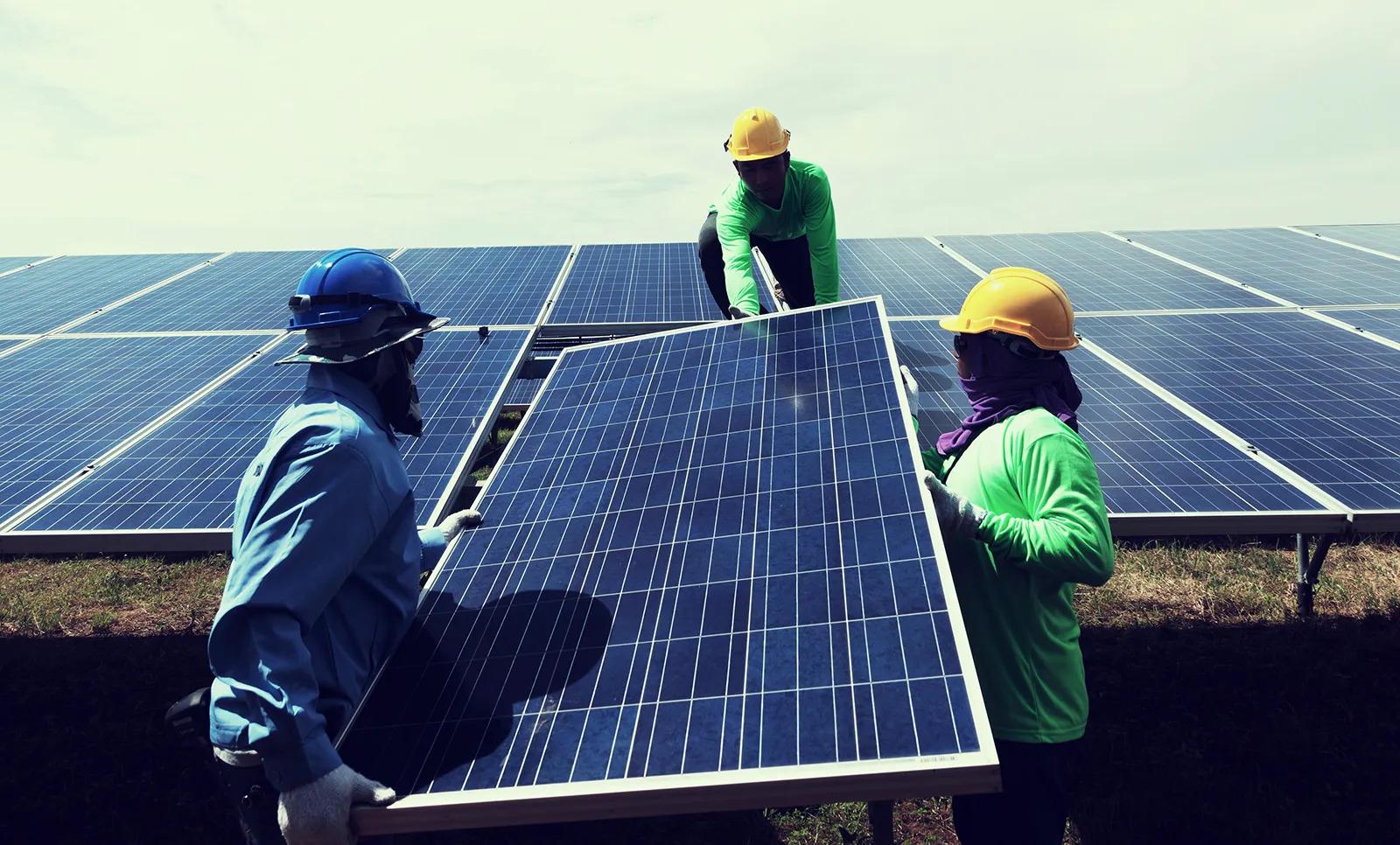- Block B2 Peace Complex Along Ikorodun Road, Jibohu Lagos State
- support@samtechsolution.com.ng

Samtech Solar panel and inverter installation is a great way to harness renewable energy, reduce electricity bills, and contribute to a cleaner environment. Whether you're considering a solar installation for your home or business, it's essential to understand the process, the components involved, and the benefits.
Solar Panels (Photovoltaic Panels): These convert sunlight into electricity. They are made up of multiple solar cells that generate direct current (DC) electricity when exposed to sunlight.
Inverter: The inverter plays a crucial role in converting the DC electricity generated by the solar panels into alternating current (AC) electricity. AC is the form of electricity used by most household appliances and in the electrical grid.
Mounting System: This includes the racks and mounts that hold the solar panels on the roof or ground. It ensures they are securely positioned to capture maximum sunlight.
Battery Storage (Optional): If you want to store excess energy produced during the day for use at night or during cloudy periods, you can install battery storage, such as lithium-ion batteries.
Charge Controller: In systems with batteries, a charge controller regulates the energy flow between the solar panels and the batteries, preventing overcharging and damage.
Site Assessment & Evaluation
Designing the Solar System
Installation of Mounting System
Solar Panel Installation
Inverter Installation
Wiring and Electrical Connections
System Testing and Monitoring
Inspection & Approval
The inverter is a critical component of the solar system, and selecting the right type depends on your specific needs:
String Inverters: These are the most common and cost-effective option. All solar panels are connected to a single inverter. If one panel is shaded or malfunctioning, it can reduce the performance of the entire system.
Microinverters: These are installed on each individual panel. They allow each panel to work independently, improving efficiency and minimizing the impact of shading or panel issues.
Hybrid Inverters: These inverters combine the functions of both a solar inverter and a battery inverter. They’re ideal for systems with battery storage and can manage both the solar panels and stored energy.
Cost Savings: Solar energy reduces your electricity bills by generating power from the sun, which is free. With a well-designed system, you may even eliminate your electricity costs entirely or receive credit from the utility company.
Environmentally Friendly: Solar energy is a clean and renewable source of power, which helps reduce greenhouse gas emissions and reliance on fossil fuels.
Energy Independence: By generating your own electricity, you're less dependent on external energy sources, and you can protect yourself from rising electricity prices.
Increased Property Value: Homes with solar panels are often valued higher and can sell more quickly.
Incentives & Rebates: Many countries and regions offer tax incentives, rebates, or net metering policies to encourage solar adoption, making the installation more affordable.
Solar panels require minimal maintenance since they have no moving parts. However, they should be cleaned periodically, especially in areas with high dust or pollution. The inverter typically needs to be checked for any error codes or malfunctions. Most inverters come with a 10 to 12-year warranty, and their performance should be monitored over time.
Installing solar panels and an inverter is a significant step toward reducing energy costs and environmental impact. Whether you're looking for a small residential installation or a larger commercial setup, the process involves careful planning, the right equipment, and professional installation. With proper maintenance, your solar system can provide reliable energy for decades to come, making it a smart investment in both the short and long term.





